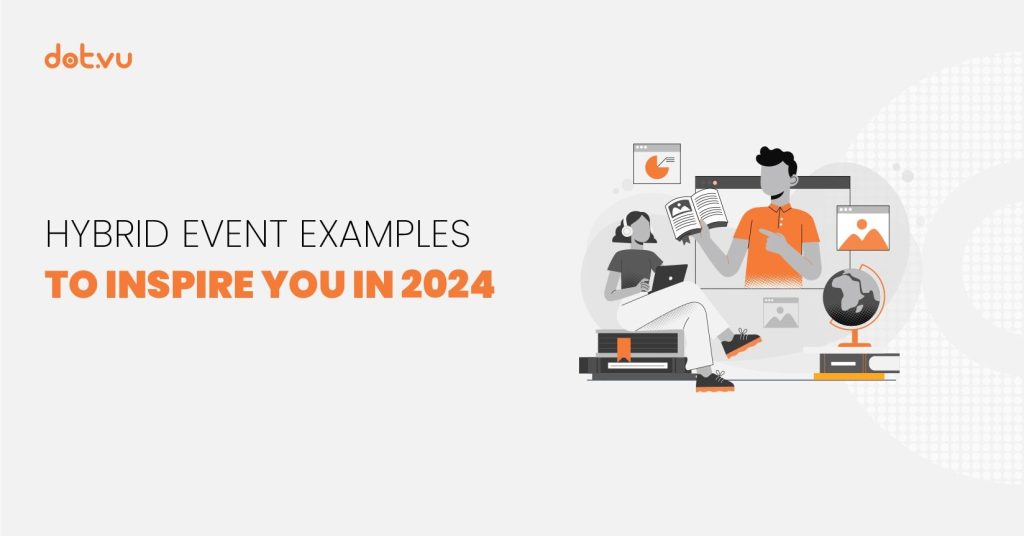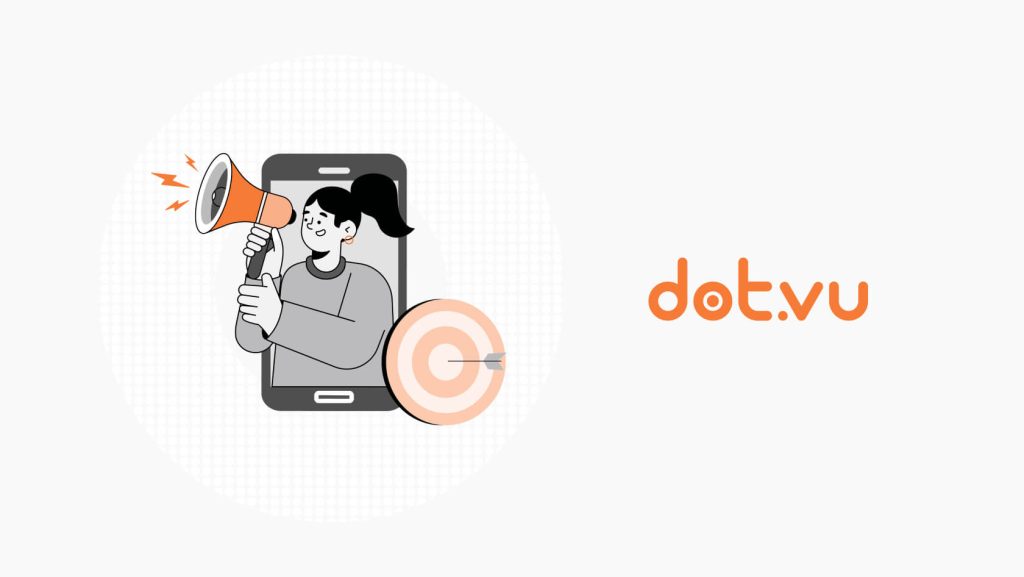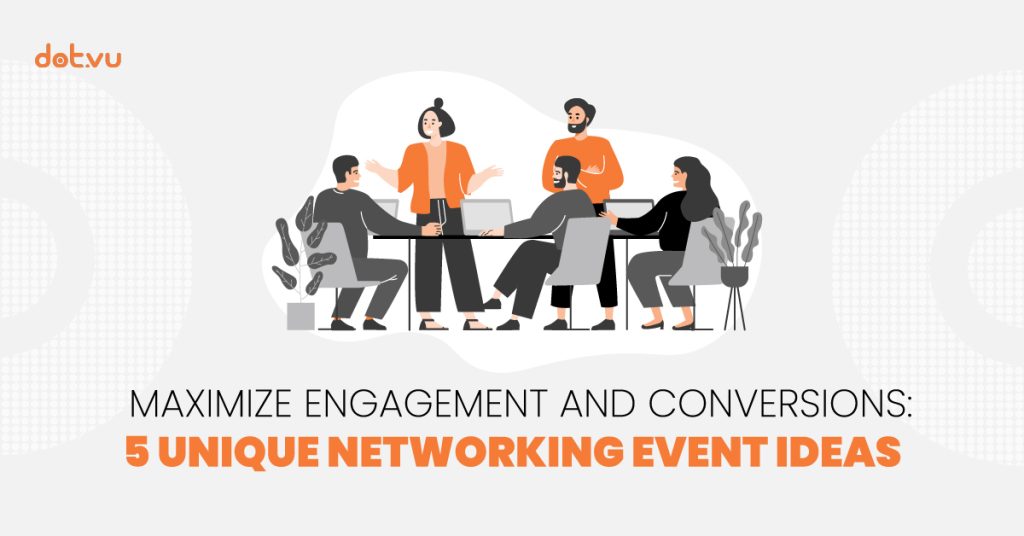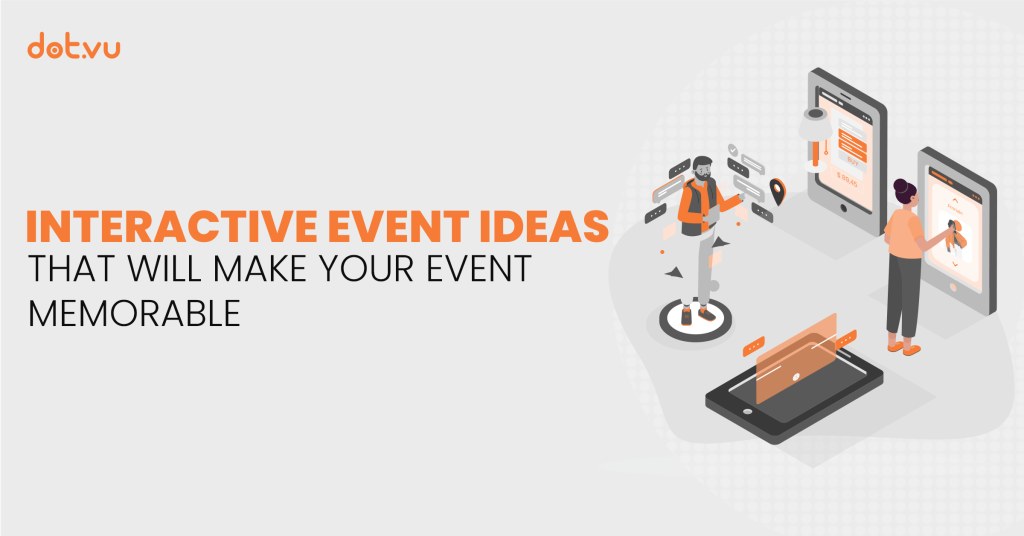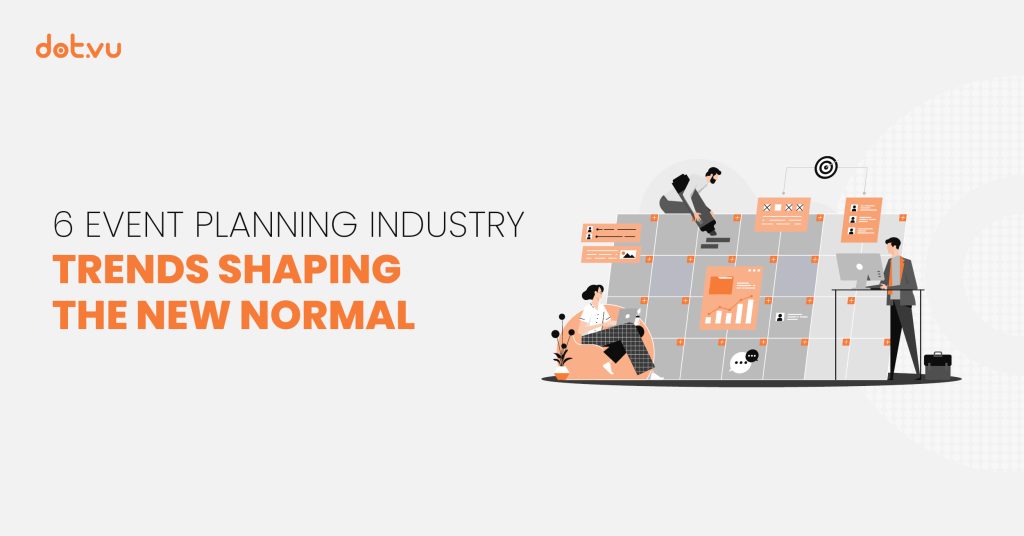
The event industry is continuously evolving. The average number of attendees is decreasing, the audience’s expectations are becoming more difficult to match, and there is a significant shift to online. The reason? Innovative technologies and ideas emerge every single day. Today, businesses can organize and promote their events more efficiently.
If you are an event planner and you want to know the event planning industry trends shaping 2022, you are at the right place! We gathered the top 6 event industry trends that every company should know.
In this blog post, you can learn more about the following trends in the event industry:
- Hybrid events
- Sustainable events
- Micro events
- Data collection
- Focus on safety and health
- Gamification
Top 6 event planning industry trends
Hybrid events
The popular combination of in-person and virtual elements is here to stay. In fact, according to Statista, 35% of events in 2022 will be hybrid. Therefore, there is an increasing demand for hybrid events solutions and tools.
The global pandemic taught us that we should always be prepared in case of unexpected circumstances. That being said, considering virtual or hybrid events can save you in extreme situations. Adding digital elements to your plan will serve as your backup.
INBOUND, InEvent’s 2021, Content Marketing World, and FinCon21 are some hybrid event examples you might find inspiring. Why limit yourself to a certain number of attendees when you can invite more people to participate virtually?
Key takeaways for event planners: consider organizing a hybrid event to increase attendance, reduce costs, and improve audience engagement.
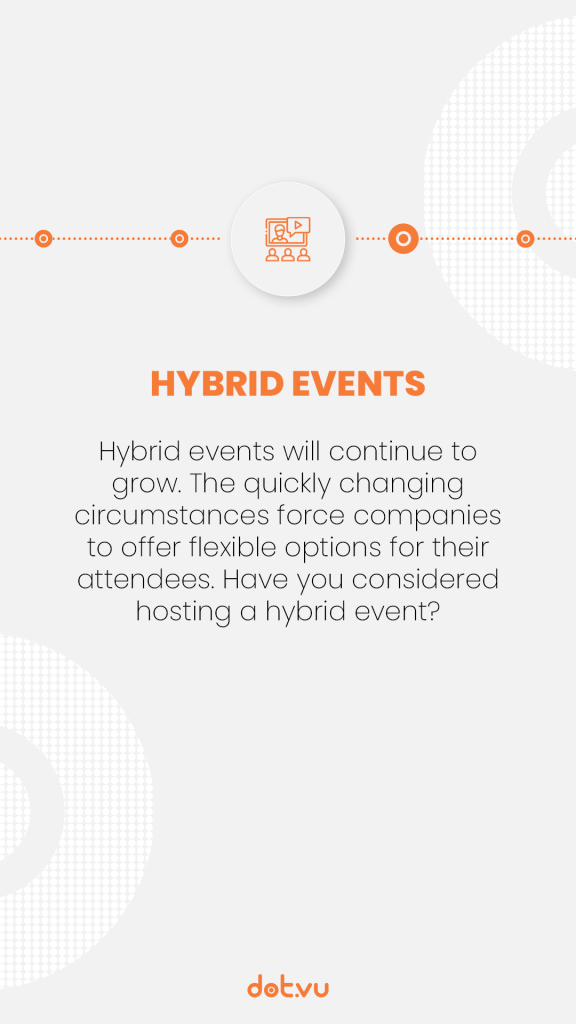
Sustainable events
Sustainability is increasingly becoming a necessity for corporations and private consumers. Events are no exception. In 2022, more than 80% of event planners take sustainability into consideration when organizing their meetings and conferences.
One way to make your events more sustainable is to follow the UN Sustainable Development Goals. As a result, you will reduce your overall carbon footprint. Here are a few ways to do this:
- Opt for environmentally conscious venues.
- Develop a recycling system for your speakers and attendees.
- Support local suppliers and restaurants for your catering.
- Reduce the transportation footprint by encouraging car-sharing and offering the option of joining virtually.
- Avoid single-use plastic.
- Provide water bottle refill stations.
- Sell e-tickets instead of paper tickets.
Incorporating eco-friendly objectives into your plan pays off. Not only will you improve your corporate image, but you will also meet attendees’ expectations. Consumers are more likely to support companies that address climate change.
Key takeaways for event planners: sell e-tickets, provide water bottle refill stations, avoid single-use plastics, opt for local suppliers, and develop a recycling system if your venue is lacking one.
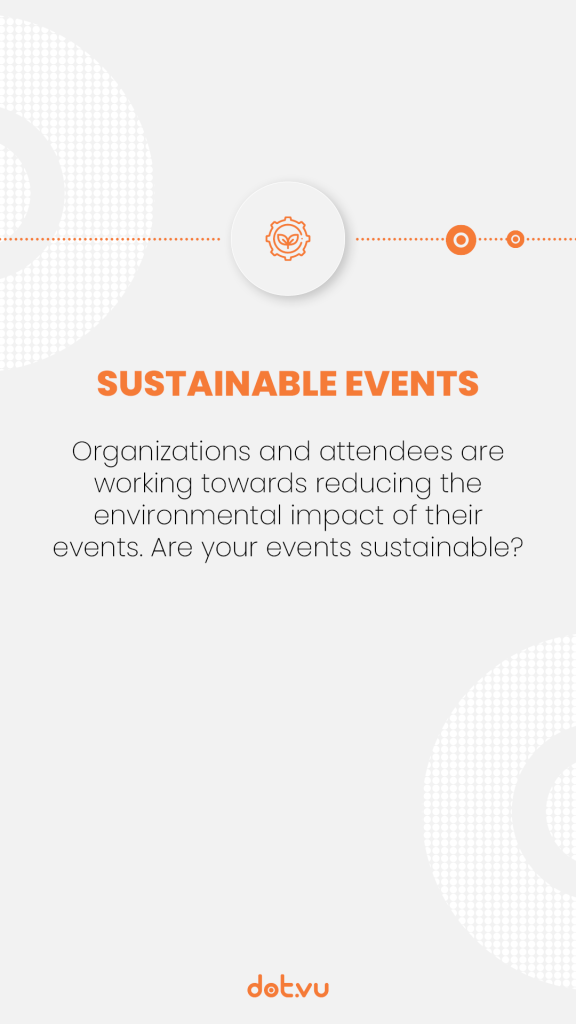
Micro events
Micro events are short, tailored experiences with minimal setup and a smaller audience.
Let’s talk about the rise of micro- events in a post-COVID world. While the average attendance for an event in 2019 was nearly 5000 people, this number plummeted in the following years. Today, terms like ‘micro weddings’ and ‘pandemic pod meetups’ are quite popular. Companies and event planning firms discovered the charm of having fewer attendees. The minimal setup allows for more personalized content. Therefore, micro0 events are among the event trends that companies with niche audiences should consider.
The benefits of hosting a smaller event include lower costs, focus on people, and a higher safety level.
Key takeaways for event planners: explore the charm of micro-
events when you need to cater to niche audiences or minimize costs.
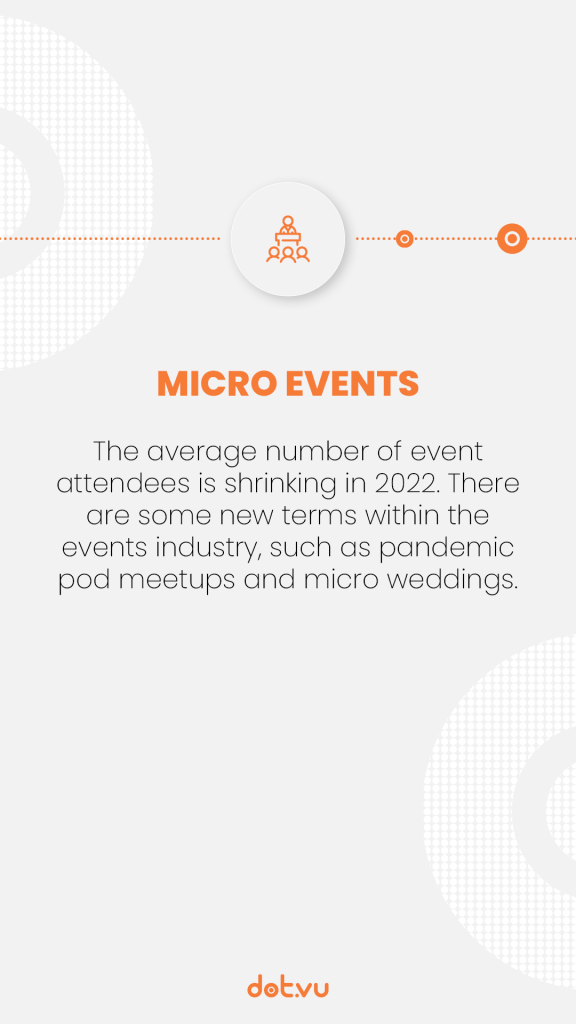
Data collection
Collecting data can help event planners get to know their attendees better and, thus, cater to their needs. The ever-changing consumer expectations require a careful analysis of your customers’ behavior. This is easier for virtual and hybrid events, where you can track clicks, interactions, time on page, and other crucial metrics. However, you can also create a survey after your physical event.
Interactive Content allows you to gather valuable customer insights through engaging online experiences like Quizzes, Marketing Games, and Videos. How does it work? Imagine that you want to talk about a topic that is difficult to understand. How would you present it to the public? The first things that come to mind are probably presentations or videos. Well, these methods are not bad, but you can do much better! Your attendees might feel mentally exhausted after following a 2-hour long presentation. Instead, you can create an Interactive Video, where you talk about your topic, but you allow your viewers to interact with the content. For example, you can add a quiz after every subtopic to challenge and entertain your audience.
Related: What is Interactive Content?
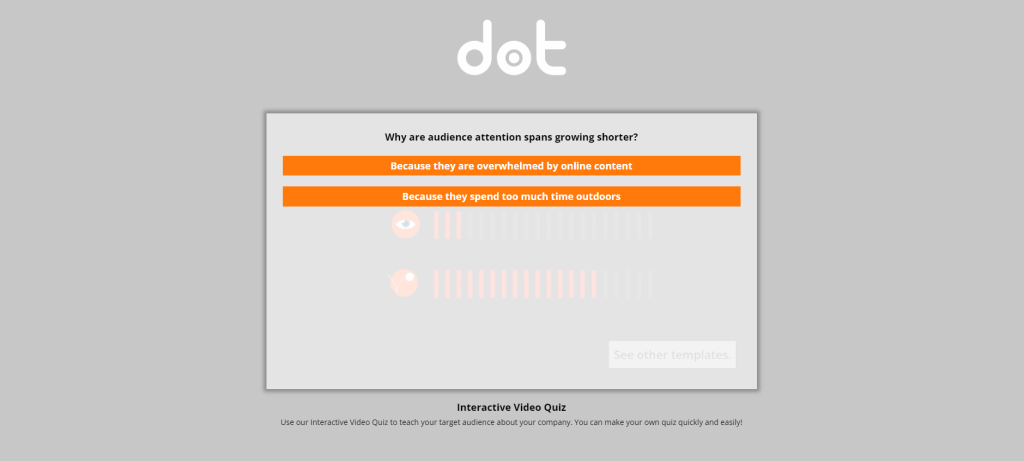
Besides engaging your audience, using an Interactive Video or another type of Interactive Content will help you gather data. You can track every interaction and find out whether your content materials keep your attendees focused.
It is crucial to measure the success of your event. The number of attendees is a good starting point, but there is so much more to dig into. Post-event surveys will help you understand your audiences, what they liked, and what they didn’t like about your conference or trade show. Furthermore, you can also use a survey to evaluate your sponsors’ satisfaction.
Related: Poll vs. survey: the right choice for your business
Key takeaways for event planners: leverage the power of Interactive Content to implement active data collection.
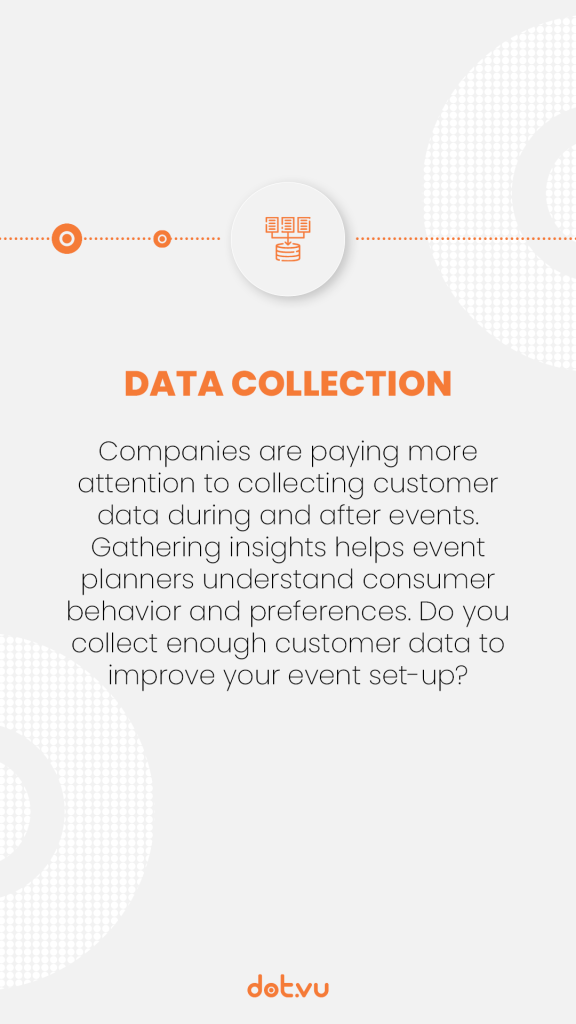
Focus on safety and health
Social distancing, showing proof of vaccination, wearing masks, and adequate hand hygiene are a part of the safety measures that shaped the event industry in 2020 and 2021. Although many countries have lifted Covid-19 restrictions, people are still concerned about their health today.
Here are a few tips for a safer environment during your next event:
- Follow the local public health authority’s recommendations.
- Encourage social distancing.
- Ensure specialized cleaning of the venue.
- Take the necessary measures to ensure high air quality.
- Consider requiring proof of vaccination.
- Provide hand sanitizers at every major touchpoint.
Key takeaways for event planners: follow the local public health authorities, offer flexible booking policies, and consider hybrid events to reduce exposure.
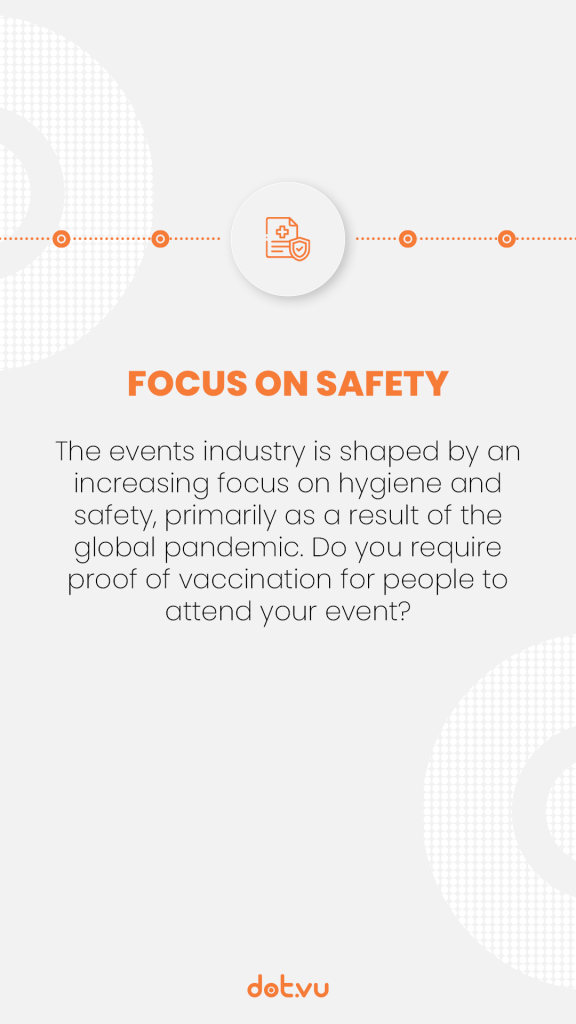
Gamification for events
Gamification is no longer a buzzword. In fact, the gamification market is expected to grow by almost 30% by 2026. Companies apply gamified content in marketing, recruiting, and internal training. Event planning is no exception.
Games are among the most creative ways to promote your event and spark interest. There is no doubt that gamification for events is among the top event planning industry trends! For instance, you can add a challenging game to your event microsite.
Event gamification is a unique way to enhance the overall experience during your next event. From launching a loyalty points campaign to creating an online game, you can gamify every element of your strategy. For example, you can offer your audience a fun game during the waiting stage; before your virtual event goes live.
Furthermore, gamification can help you with the following problem (scratch to reveal!):
Gamification is also a great method to increase attendee satisfaction. Furthermore, when your audiences play a Marketing Game, their interactions are kept in your database. Consequently, you can monitor their behavior, clicks, achievements, and time on page.
Key takeaways for event planners: leverage the power of gamification during your next event to enhance audience engagement and satisfaction.
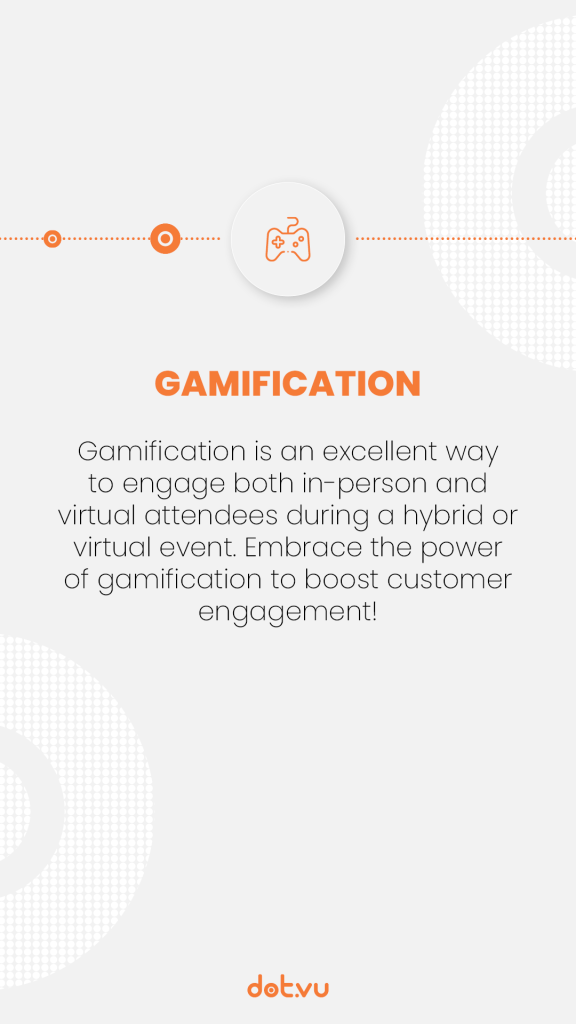
Examples of using Interactive Content for events
Now. let’s explore some interactive event ideas that you can easily replicate:
Pre-event Survey
You can get a better understanding of your audience’s and speakers’ expectations and preferences with surveys. Pre-event Survey is a user-friendly template that enables you to tailor your program and make your event content more engaging and memorable.
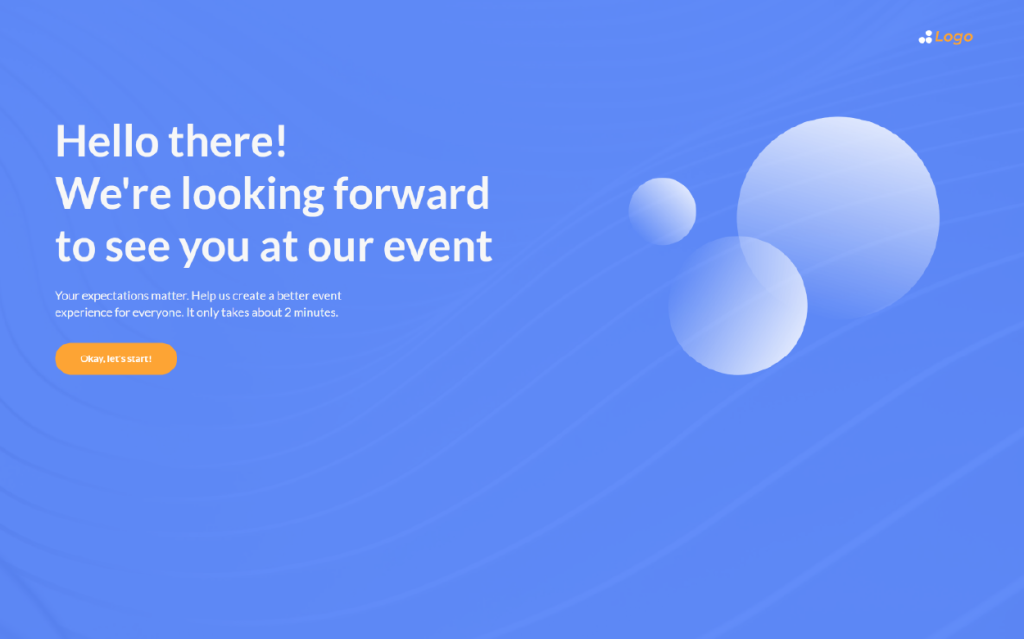
Conference Microsite
Conference Microsite is a template we designed for you to promote your next event successfully. You can find everything you need on this microsite, including the agenda, speakers list, FAQ section, networking opportunities page, and registration forms. Therefore, you save a lot of time from developing your own event microsite. Plus, the template allows you to adapt the design to your brand guidelines and image.
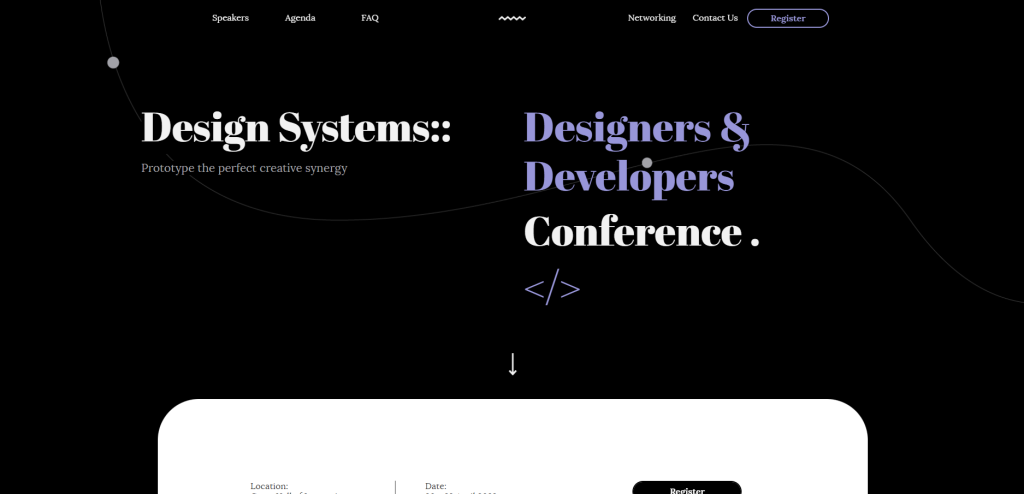
Interactive Quiz
Event planners can use an Interactive Quiz both before, during, and after an event. For example, you can spark interest and introduce the topic of your conference with an engaging quiz. You can also use this tool to test the knowledge of your attendees during or after the event.
Related: What is an Interactive Quiz?
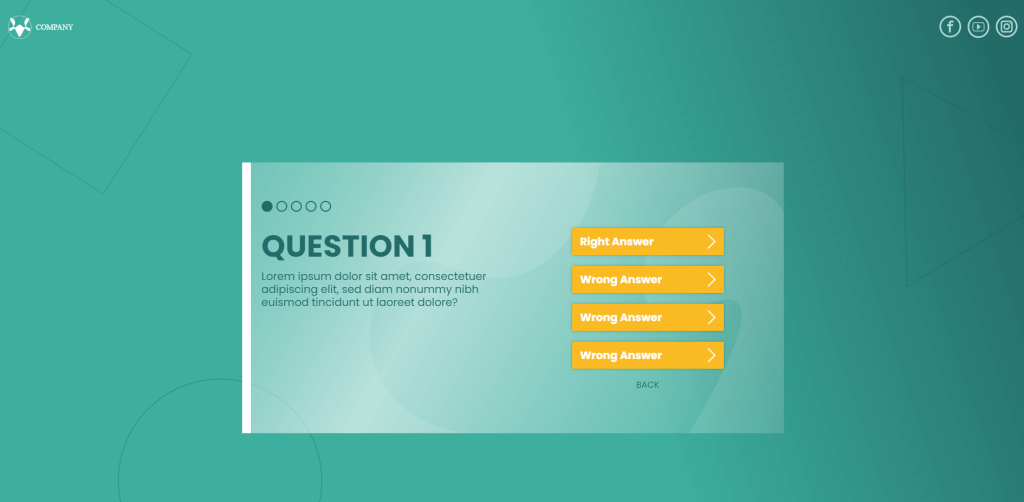
Timeline Infographic
If showcasing your company history is part of your agenda, a Timeline Infographic can help you keep attendees engaged. Rather than reading long texts or viewing static timelines, your virtual guests can interact with your brand story. Clicking on the different elements makes them feel like a part of your journey, which in turn will increase customer loyalty.
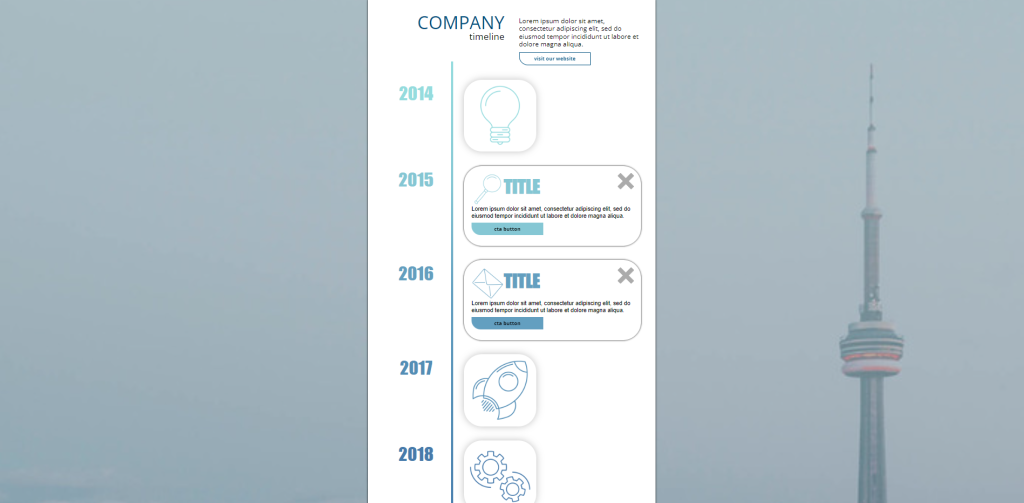
Marketing Games
Marketing Games can significantly increase attendee engagement during your next event, because they are fun and easy to play. For example, you can launch a Rotating Puzzle for your guest. Adapt the design so that it aligns with your brand identity and event theme, and your audience will love it!
Besides increasing engagement, Marketing Games enable you to gather valuable consumer data. You can track every interaction within the experience and analyze the results to find room for improvement.
An online puzzle is equally challenging and entertaining. Try it out for yourself!
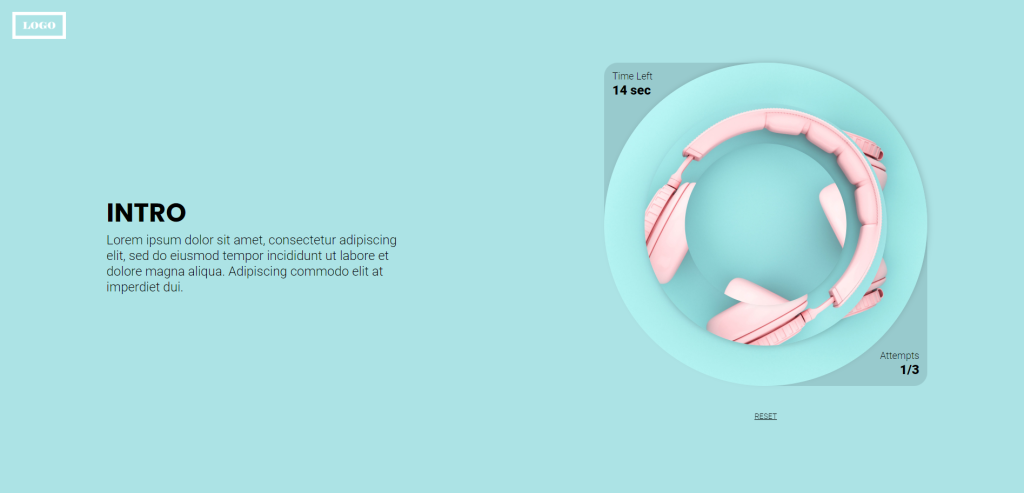
Interactive Video
You can use Interactive Video during your events for many purposes, such as educating, entertaining, engaging, and storytelling. For example, you can turn your company presentation into an Interactive Experience where the attendee can navigate through the topics.
Related: What is an Interactive Video?
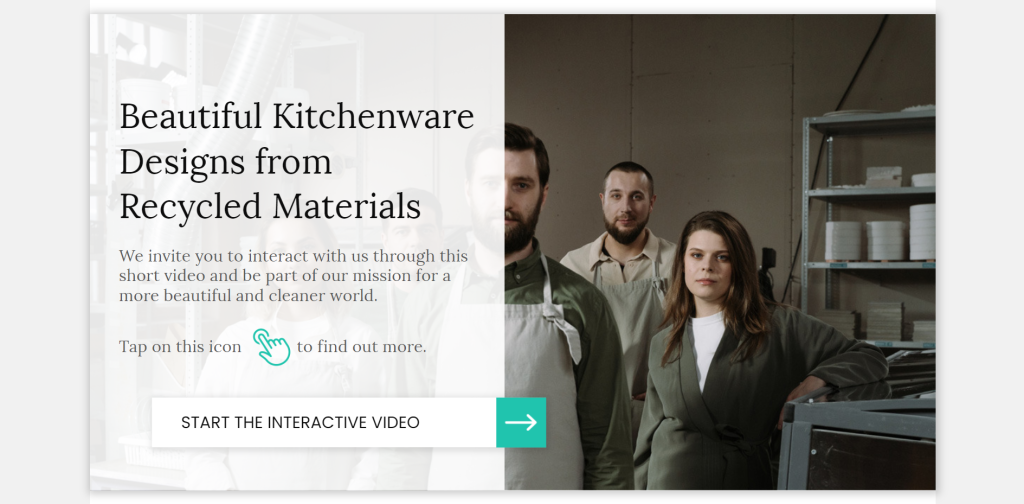
Interactive Polls
Event planners want to know whether their event went well. An Interactive Poll can help in collecting the necessary information to measure your success. Furthermore, this experience will make your attendees feel that their opinion is important.

Embrace the key event planning industry trends in your strategy
Companies begin to follow the event trends in 2022 to reach larger audiences, increase satisfaction, and improve their brand image.
You can also embrace the top trends in the event industry and create an unforgettable customer experience. Rapid technological advancement allows you to organize physical, online, or hybrid events with massive success.
Dot.vu is an Interactive Content platform with hundreds of templates that you can use for your next event. Create excitement among your attendees with stunning microsites, Interactive Quizzes, Marketing Games, Interactive Videos, surveys, or polls.
Create a free account and try one of our templates – no coding experience is needed!
